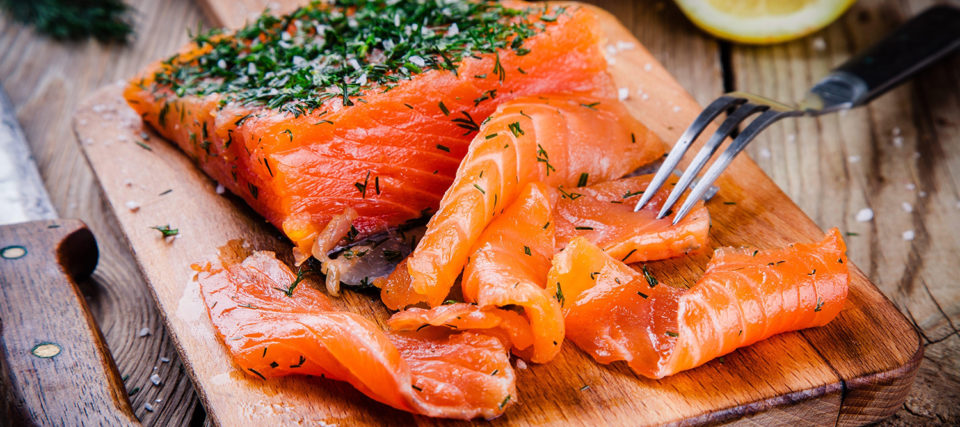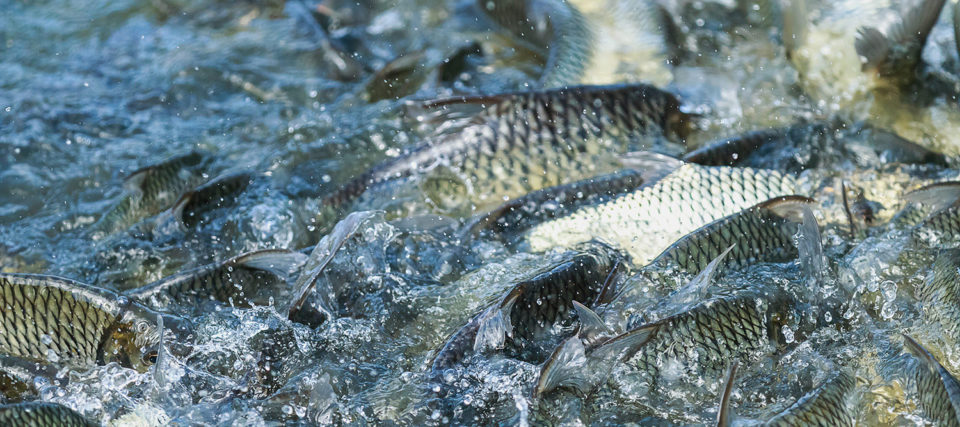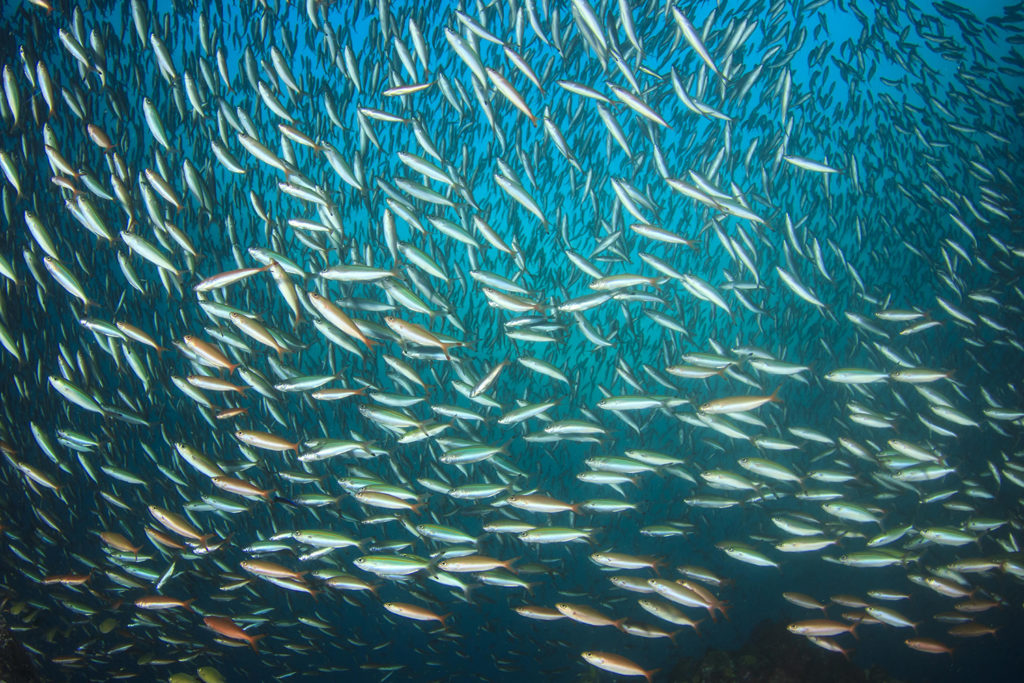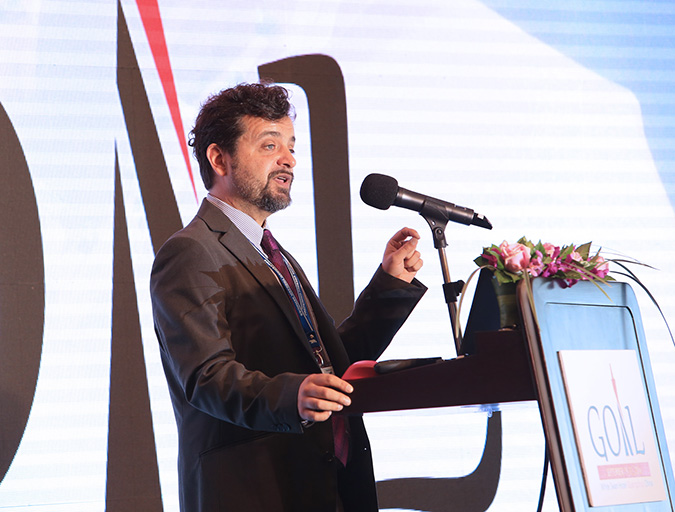IFFO: For every kilogram of wild fish consumed by aquaculture, 4.55 kilos of farmed fish are produced

Fish In:Fish Out (FIFO) ratios have been examined over time as a way to look at the performance of aquaculture in relation to the wild fish that are utilized in feed. Although there are some issues with the applicability of the concept, FIFO is still regarded by some as a benchmark of progress by the sector in relation to its environmental performance.
With this in mind, IFFO has updated the FIFO estimates using the data we have available for 2015, following the same protocol that was applied to determine the FIFO figures for 2000 and 2010.
How FIFO ratios are calculated
The way that IFFO calculates FIFO ratios is based on the following:
- Use of FAO production data to provide estimates for aquaculture production tonnages by species groups;
- Standard yield figures for fishmeal (22.5 percent) and fish oil (4.8 percent) applied across all raw materials in production;
- Estimates for industry use of byproduct in fishmeal and fish oil production are applied (currently at 33 percent);
- Application of industry-wide feed inclusion levels for fishmeal and fish oil, feed conversion ratios (FCR), and regional proportional fed volumes estimates based on expert opinion;
- A correction for fishmeal and fish oil volumes assuming marine ingredients operate within a global industry where the redirection of products to meet market needs occurs (removes the risk of double-counting).
For individual species groups, the total amounts of fishmeal and fish oil are calculated based on the required feed volumes, in turn based on FCR estimates. These figures are extrapolated to whole fish equivalents for raw material, based on the yield figures. A conversion factor is then applied to the raw material figures to account for the byproduct volume used in production, reflecting the reality in the sector. The species groups are sorted against fishmeal and fish oil use, in order to allow for differences in inclusion rates in the feeds of different groups (e.g. salmonids use more fish oil, shrimps use more fishmeal).
These data are presented below (Table 1), alongside the figures calculated for 2000 and 2010.
Auchterlonie, FIFO, Table 1
| Species/group | 2000 | 2010 | 2015 |
|---|---|---|---|
| Crustaceans | 0.91 | 0.45 | 0.46 |
| Marine fish | 1.48 | 0.88 | 0.53 |
| Salmon/trout | 2.57 | 1.38 | 0.82 |
| Eels | 2.98 | 1.81 | 1.75 |
| Cyprinids | 0.07 | 0.03 | 0.02 |
| Tilapias | 0.27 | 0.18 | 0.15 |
| Other freshwater fish | 0.60 | 0.15 | 0.13 |
| Aquaculture TOTAL | 0.63 | 0.33 | 0.22 |
We see in general that fed aquaculture species are showing a reduction in the FIFO calculation. This, of course, is not unexpected as the inclusion rates for fishmeal and fish oil have been declining as more aquafeed volume is produced against a background of finite annual fishmeal and fish oil supply. The overall fed aquaculture figure shows a marked decrease to 0.22, essentially meaning that for every 0.22 kg of whole wild fish used in fishmeal production, 1 kilogram of farmed fish is produced. In other words, for every 1 kg of wild fish used, 4.5 kg of farmed fish is produced. Of particular note is the figure for salmonids, which for 2015 is seen to be below 1.0, i.e. the salmonid feed industry supports the production of more farmed fish than it uses as feed fish, which appears to be the first time this has been recorded.
There is one exception to the trend in the 2015 figures, where crustaceans (i.e. farmed shrimps) are similar to the 2010 figures. This may be readily explained by the impact of the disease problems in the sector, reducing yield and affecting FCRs, set against a fishmeal inclusion rate that has declined only slightly between 2010 and 2015 when viewed across the industry.
On the whole this is a very positive message about the contribution that marine ingredients make to global protein production. The fishmeal industry supports the production of a significantly greater volume of protein for humanity than would be supplied merely through the direct consumption of the fish used as raw material in the production process.
Key points on 2015 FIFO ratios
- FIFO (Fish In:Fish Out) for the conversion of wild feed fish to farmed salmon is 1:1.22 (2015 ratio), showing that farmed salmon now produce globally more consumable protein than is used in feed.
- For all fed aquaculture, the FIFO is 0.22:1 (2015), or 1:4.55 (i.e. every kilogram of wild fish supports the production of 4.55 kg of farmed fish).
- Declining FIFOs reflect the use of fishmeal and fish oil as strategic ingredients at key points in aquaculture production cycles with a trend towards optimizing their nutritional contributions.
It has been asserted, and widely disseminated in the media and conference platforms, that five, or even more, kilos of wild feed/industrial fish are harvested to produce, via fishmeal and fish oil in aquafeed, just one kilo of farmed salmon. This is often expressed as a Fish In:Fish Out (FIFO) ratio of 5:1.
This ratio probably entered common parlance from academic papers, notably those of Tacon and Metian (Aquaculture, 285:146–158. 2008) – which put forward a FIFO of 4.9:1 for farmed salmon, and Naylor, et al. (Proceedings of the National Academy of Sciences, Volume 106, no. 36, 2009) who used 5:1.
Against a background of concern about overfishing and how to feed a growing world population, using 5 kg of fish to produce 1 kg of fish seems obviously wasteful and inefficient. Critics usually go on to insist that fishing to produce fishmeal and oil for aquaculture or land animal feed is simply not acceptable in terms of resource use and should be banned or severely curtailed.
In short, this 5-to-1 assertion damages the public, commercial and political acceptance of the use of fishmeal and fish oil in aquafeed. How can their use be responsible and sustainable if that is the ratio?
Are these 5:1 FIFO figures correct?
No. In fact the FIFO for salmon for 2010 (using the data of Tacon and Metian), but recalculated by Dr. Andrew Jackson, technical director of IFFO, was 1.4. In other words, only 1.4 (NOT 5) kilograms of feed fish were used to produce each kilogram of farmed salmon. T hat figure has since declined to 0.82, meaning that more farmed salmon are produced than feed fish used.
Salmon is just one farmed fish species. Looking at the whole of fed aquaculture (the expression “fed aquaculture” refers to farmed fish and crustaceans like shrimp fed with factory compounded feed, often including fishmeal and fish oil), the accurate FIFO is 0.22:1, which means that global aquaculture used just 220 grams of wild fish for each kilogram of farmed fish and crustaceans produced. Aquaculture globally is actually producing four and a half times as much farmed seafood as it uses feed fish, via fishmeal and fish oil. The contribution of marine ingredients to feeds for these species is essential as the nutritional factors provide by these materials cannot be provided by other ingredients, or at least only with considerable reformulation, provision of selected individual micronutrients, and, of course, much added cost.

These lower FIFOs give a much more positive picture of the efficiency of using fishmeal and fish oil in aquaculture feed. How were they calculated?
Previously, Andrew Jackson of IFFO took the same data as used by Tacon and Metian and studied the method by which they had calculated a salmon FIFO of 4.9:1. He found two important errors:
- Both fishmeal and fish oil are used in aquaculture feed, in varying amount according to species and growth stage. The previous calculations addressed how much wild fish was needed to produce the fish OIL required to produce one kilogram of salmon. As use of oil is comparatively high in salmon feed, this approach inflated the FIFO, and a significant quantity of meal was ignored or “thrown away” in this method. Dr. Jackson developed a new equation for calculating FIFO that reflected the real-world situation where all the fishmeal and all the fish oil produced is actually used, with some species like salmon using higher proportions of oil and some like shrimp using higher proportions of meal. Dr. Jackson cross-checked his calculation by using both his own FIFO and that of Tacon and Metian to determine how much wild feed fish was used annually and compared that against the best available actualcatch and usage figures, from FAO data. The Jackson FIFO was a much better match. The 2015 figures have been updated consistent with this approach.
- Previous calculations had assumed that all the raw material used in fishmeal production was whole wild-caught fish. In fact, a 2010 IFFO survey showed that 25 percent of production was derived from byproducts of fish processing – heads, guts, frames and other trimmings. So the wild fish represented just 75 percent of raw material. Dr. Jackson corrected the FIFO calculation to reflect this and the FIFOs fell further – as the same amount of farmed fish was being produced from 25 percent less feed/industrial fish. The details of Dr. Jackson’s calculations were presented in a paper in 2009 (Aquaculture Europe, Volume 34 (3). 2009). For the 2015 calculation we have again updated the byproduct contribution figure, which based on the report of Jackson and Newton (2016) is 33 percent.
The summary table shows that FIFOs are not only lower than have been asserted but continue to fall steadily. Taking the example of salmon, in 2010 the FIFO was 1.4, compared with 2.6 in 2000, then reaching 0.82 in 2015. The same trend applies to other species.
FIFOs are falling and will continue to fall as a result of:
- Increasing volumes of byproduct waste being used to make fishmeal and fish oil
- Better conversion of feed into live weight gain on the fish farm (improved technology and farming systems)
- Falling percentages of fishmeal and fish oil being used in fish feeds
- Fishmeal and fish oil being used more strategically in aquafeeds
Are these FIFOs accepted by scientists, the value chain and NGOs?
From 2009, when Jackson first recalculated FIFOs, to date, the revised FIFOs and the method of calculation have been presented at more than 20 conferences and meetings with key players in the value chain. They were the topic of a major article in the journal of the European Aquaculture Society, Aquaculture Europe, in September 2009 and they were published again by OECD (Proceedings of Workshop on Advancing the Aquaculture 15-16 April, 2010, OECD) in 2010.
Following the publication in Aquaculture Europe Naylor et al (2009) criticized this method and said: “Alternatively, if one assumes no excess requirement for fish oil and both ingredients are treated equally in the calculation, then FI/FO would be lower. The latter assumption allows one to add up all species to reach a grand total, because excess fishmeal or fish oil from the diet of any given species will be consumed ultimately by other fish or livestock species, or even by humans in the case of residual fish oil. However, such a calculation obscures the fact that rising demand for species high in fish oil could lead to continued increases in the amount of forage fish used in feeds.”
However, given that the economic value of the fish oil and fishmeal per metric ton produced are the same, this argument does not have much logic.
The Standards Oversight Committee of the Global Aquaculture Alliance’s Best Aquaculture Practices (BAP) scheme has just adopted FIFO, as calculated by IFFO, as a measure in their standards.
But could the fish used for fishmeal and fish oil production not contribute more to feed the world if they went directly for human consumption?
That is not the case, and this question is answered in detail in another positional statement from IFFO. This quotes work by Ulf N. Wijkström that focused on whether there was a real human consumption demand for the various species used to producer fishmeal. For example, he classified menhaden and sand eel as forage species, not in demand at all as food; and all the main anchovy stocks, including those from the massive South American fishery, as having only small or niche markets for human consumption, with the bulk going for fishmeal.
Overall, Wijkström concluded that there were not human consumption markets for most feed/industrial fish. He also concluded that feeding fishmeal and fish oil to farmed fish and shrimp expanded the effective supply of fish for human consumption by 7 to 8 million metric tons a year.
Is FIFO really the best measure of efficiency?
Frankly it is not, but it is one most widely quoted, so it needs to be addressed.
Neither the FIFO, nor the feed conversion ratio (FCR), are true measures of nutritional efficiency, and what fishmeal and fish oil provide to aquafeeds from a nutritional perspective goes well beyond the mere supply of protein and energy. That is why IFFO describes marine ingredients as strategic ingredients, because as well as the growth of the farmed animal, they also make significant contributions to health, welfare and quality. This view is supported by scientific studies.
It should also be remembered that fish are much more efficient converters of feed to flesh than any other animal, including pigs and poultry.
Much more important than the FIFO ratio is the need to ensure that the fisheries and factories that supply the fishmeal and fish oil to the industry are responsibly managed in environmental and safety terms. IFFO has introduced its Global Standard for the Responsible Supply for fishmeal and fish oil (known as IFFO RS), a tool that can be used by a factory to demonstrate its raw material buying policy and its good manufacturing practices.
More information on the RS Standard can be found here. FIFO is a relatively crude way of managing the marine ingredient levels in aquafeeds, and if the material is responsibly sourced then the application of the concept is flawed.
Now that you've reached the end of the article ...
… please consider supporting GSA’s mission to advance responsible seafood practices through education, advocacy and third-party assurances. The Advocate aims to document the evolution of responsible seafood practices and share the expansive knowledge of our vast network of contributors.
By becoming a Global Seafood Alliance member, you’re ensuring that all of the pre-competitive work we do through member benefits, resources and events can continue. Individual membership costs just $50 a year.
Not a GSA member? Join us.
Author
-

Dr. Neil Auchterlonie
Technical Director
IFFO – The Marine Ingredients Organisation
London, United Kingdom[116,101,110,46,111,102,102,105,64,101,105,110,111,108,114,101,116,104,99,117,97,110]
Tagged With
Related Posts

Aquafeeds
Omega-3 levels fall in farmed salmon but it’s still a top source
Reformulating aquaculture feeds, an industrywide initiative to reduce dependence on wild fish, has changed farmed salmon’s nutritional profile, as BBC News reported recently. The researchers on whose work the report was based say of course it has, yet it remains one of the best sources for these crucial fatty acids.

Aquafeeds
Aquaculture Exchange: Andrew Jackson, IFFO
Aquaculture remains dependent on fishmeal and fish oil, crucial marine ingredients in aquafeeds, particularly at key life stages. Andrew Jackson, technical director at IFFO and one of the world’s foremost fishmeal experts, tells the Advocate that the two industries can coexist well into the future if properly managed.

Aquafeeds
IFFO: Future contributions of marine ingredients in aquafeeds
Fishmeal is still the most nutritious source of protein for aquaculture diets, having a wide range of essential amino acids and a high digestibility, while fish oil is still the only commercially available source of long chain omega-3 for aquaculture diets – both are the foundation of aquafeeds.

Aquafeeds
Aquaculture Exchange: Giovanni Turchini, Deakin University, part 1
One of the world’s leading fish nutrition experts talks about how aquaculture can learn to survive, and even thrive without depending on fishmeal and fish oil. It’ll take a lot of innovation, but Giovanni Turchini is confident that the industry is on the right path.


